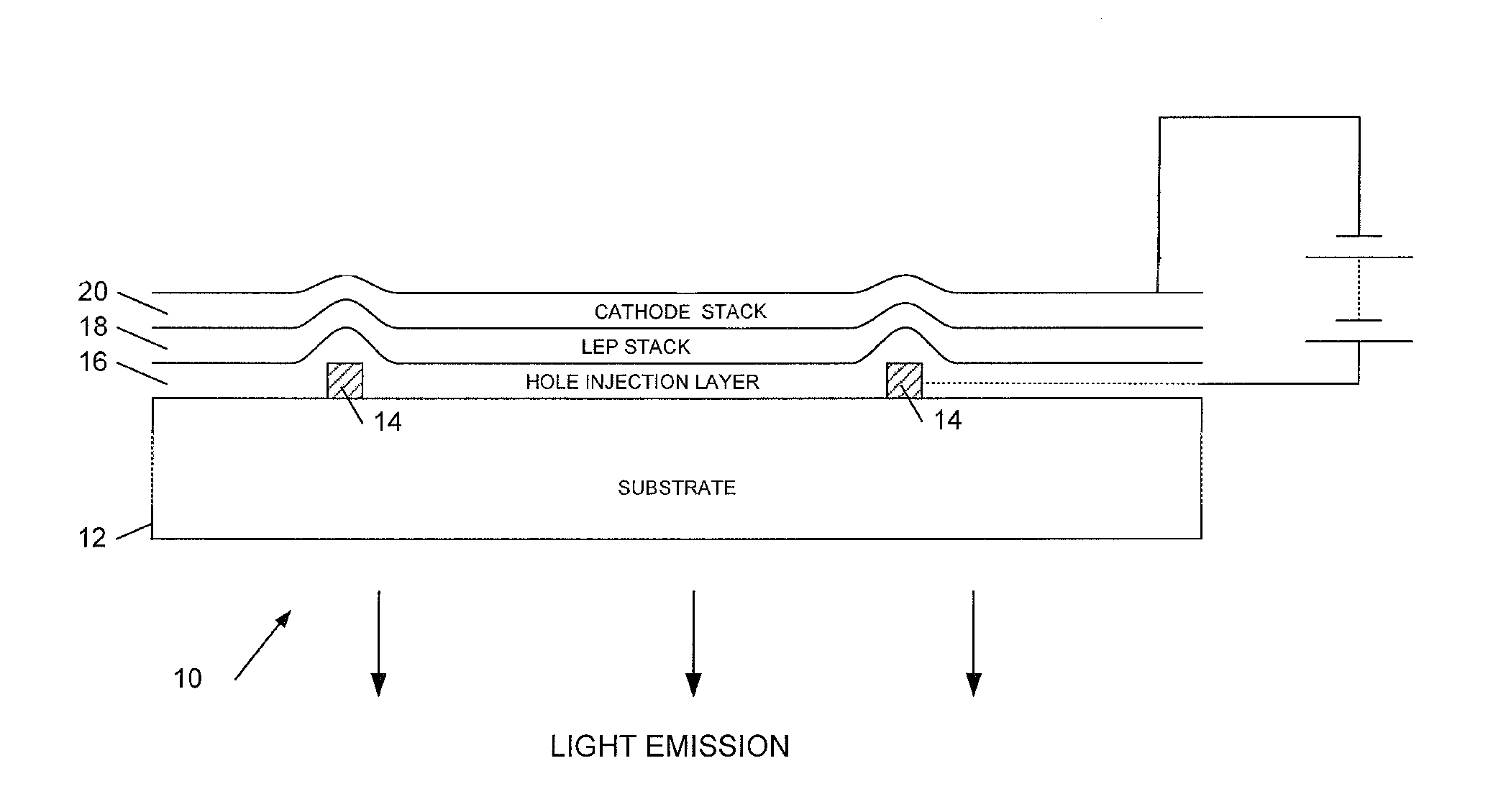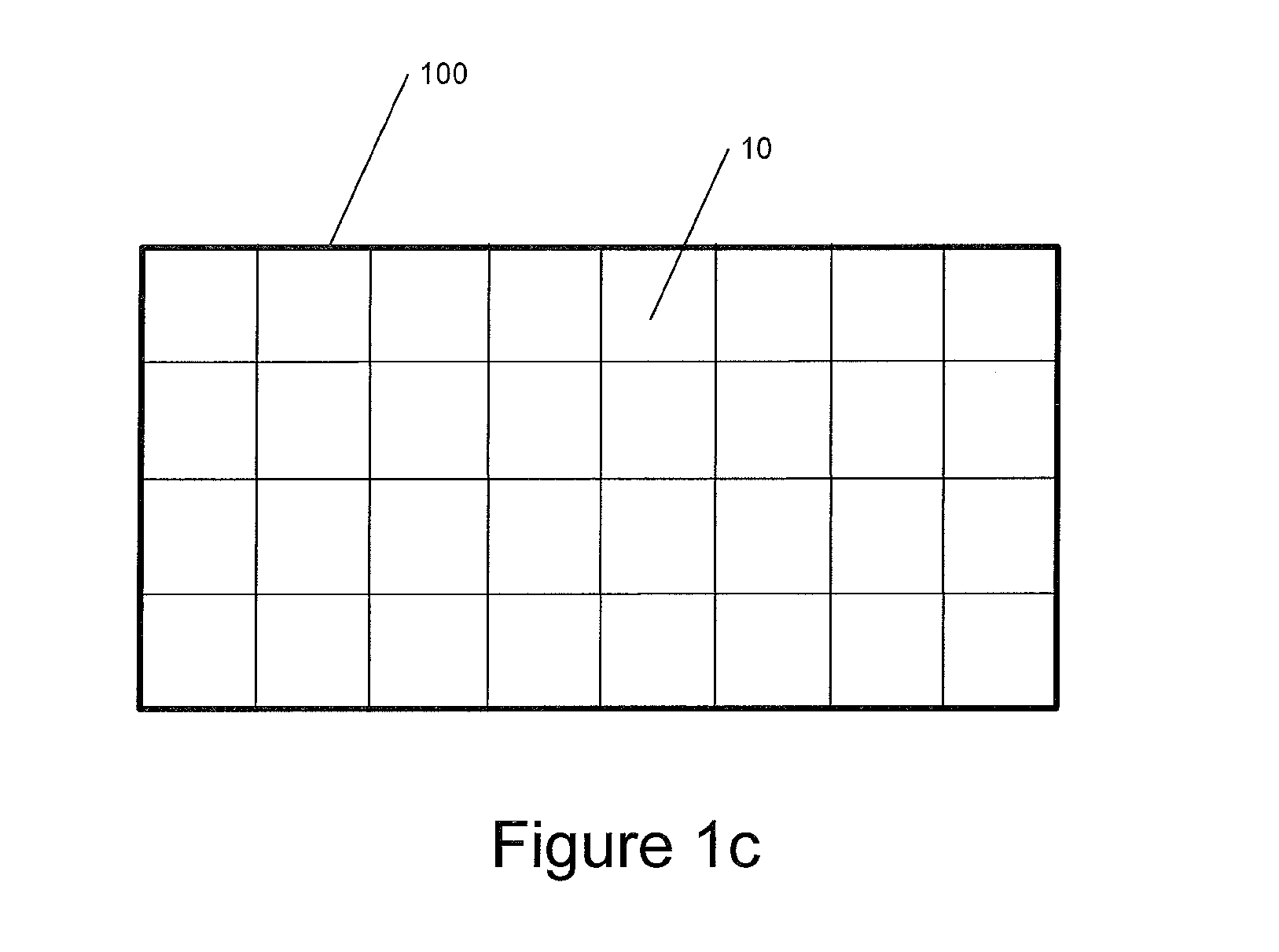Optoelectronic device
a technology of optoelectronic devices and optical components, applied in the direction of solid-state devices, semiconductor devices, thermoelectric devices, etc., can solve the problems of device instabilities and/or device failure, thickness and/or contour variations, and device instabilities, etc., to reduce the effect of gaps, reducing the effect of electrical resistance, and reducing the effect of thickness
- Summary
- Abstract
- Description
- Claims
- Application Information
AI Technical Summary
Benefits of technology
Problems solved by technology
Method used
Image
Examples
Embodiment Construction
[0057]Embodiments are generally described as optoelectronic devices or methods of fabricating such devices. Merely by way of example, the following refers in the most part to electroluminescent devices, specifically organic light emitting diodes (OLEDs) devices such as a discrete OLED, OLED lighting tile or OLED lighting panel. Nevertheless, it will be apparent to the skilled person that features described below in relation to such devices are similarly applicable to photovoltaic device embodiments.
[0058]FIG. 2 shows an optoelectronic device 28, preferably a bottom-emissive electroluminescent device, comprising anode layer 21 having metal (e.g. comprising copper, gold, silver, aluminium, etc., optionally ink-jet printed, screen printed, electro- or electroless-plated or evaporated) tracks 212 and gaps 211, a plurality of hole injection layers (HILs) comprising a first HIL 23 and a second HIL 24, a semiconductive layer 25, e.g., light emitting polymer (LEP), a cathode layer 26 and a ...
PUM
| Property | Measurement | Unit |
|---|---|---|
| conductivity | aaaaa | aaaaa |
| thick | aaaaa | aaaaa |
| conductivity | aaaaa | aaaaa |
Abstract
Description
Claims
Application Information
 Login to View More
Login to View More - R&D
- Intellectual Property
- Life Sciences
- Materials
- Tech Scout
- Unparalleled Data Quality
- Higher Quality Content
- 60% Fewer Hallucinations
Browse by: Latest US Patents, China's latest patents, Technical Efficacy Thesaurus, Application Domain, Technology Topic, Popular Technical Reports.
© 2025 PatSnap. All rights reserved.Legal|Privacy policy|Modern Slavery Act Transparency Statement|Sitemap|About US| Contact US: help@patsnap.com



